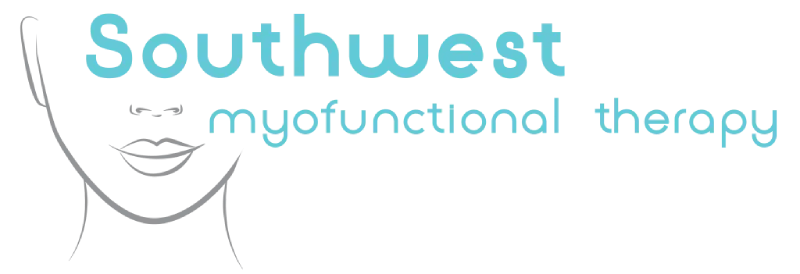Symptoms of Orofacial Myofunctional Disorders (OMDs)
Dental Problems Related to OMDs
Tongue Thrust
Sometimes when a person swallows incorrectly, the tip or sides of the tongue
press against or spread between the teeth. This is commonly called a tongue
thrust. Constant pressure from resting or incorrectly thrusting the tongue
away from the hard palate may push teeth out of place. That pressure may
later prevent teeth from breaking through the gum.
Anterior open bite and crowding
Tongue thrust may also prevent the teeth from biting together. This is known as an open bite. An open bite can cause numerous problems.
- Speech issues – The front teeth play a critical role in the way we form language. If they’re in the wrong place, that can cause a lisp and other speech issues.
- Smile issues – Since the front teeth are most prominent when we smile, an open bite is a particularly noticeable condition
Malocclusion
An OMD may lead to an abnormal bite — the improper alignment between the upper and lower teeth known as malocclusion. This problem may lead to difficulties in biting, chewing, swallowing, and digesting of food.
An open bite is one type of malocclusion, but it can occur at any part
of the bite.


Cosmetic Problems Related to OMDs
Often the most obvious symptom of incorrect oral posture involves the
muscles of the face. A dull, sluggish appearance and full, weak lips
develop when muscles aren’t operating normally.
Constantly parted lips (with or without mouth breathing) also signal this disorder. A person swallowing incorrectly will often purse and tighten the muscles of the cheeks, chin, and lips — a symptom known as a facial grimace. This can give the chin a knobby appearance because these muscles are being overused.
- The face can have a dull sluggish appearance when the muscles are not in proper balance.
- An incorrect swallow will purse and tighten the muscles of the cheeks, chin, and lips, causing a facial grimace.
- Mouth breathing or constantly open lips is a cause and/or signal of tongue thrust and low tongue rest posture.
Sleep Disordered Breathing and Mild to Moderate Obstructive Sleep Apnea (OSA) (OSA)
Recent research has shown that myofunctional therapy may reduce the symptoms of sleep disordered breathing (such as snoring) and ameliorate mild to moderate OSA (obstructive sleep apnea). When functioning and used properly, the muscles of the tongue, throat, and face, can reduce obstruction to the airway.


Speech Problems Related to OMDs
A person with abnormal oral muscle patterns may suffer a lisp or have difficulty in articulating sounds. If muscles in the tongue and lips are incorrectly postured, this can prevent a person from forming sounds of normal speech.
Improper oral muscle function may additionally lead to TMJ dysfunction, headaches, stomach distress (from swallowing air), airway obstruction, and other health challenges.
OMDs and Temporomandibular Joint Disorder (TMD)
TMD is a term used to describe pain and dysfunction of the temporomandibular joint — the joint that connects the jaw and skull. TMD can be caused or exacerbated by OMDs.

Office Hours
MON - THU8:30 am - 5:00 pm
FRI - SUNBy appointments only
